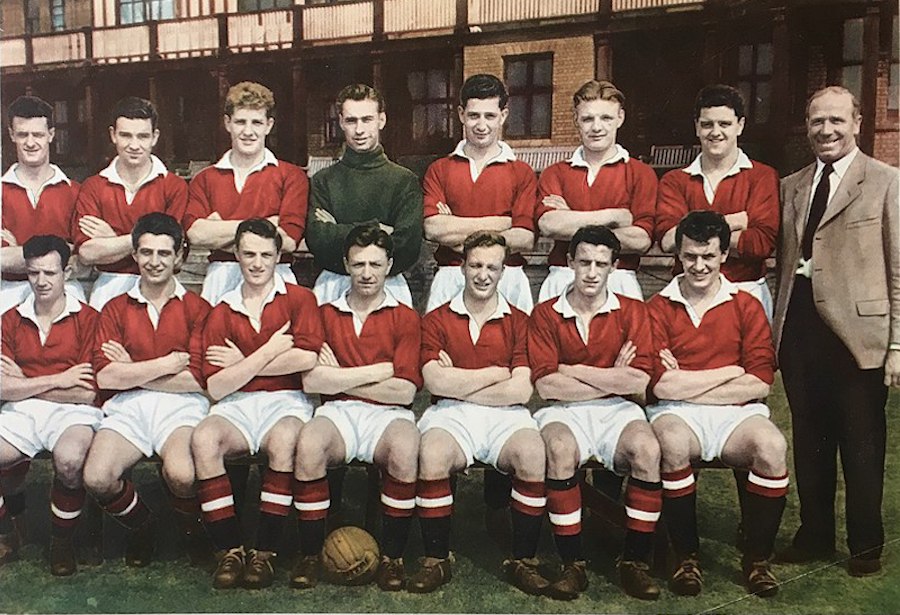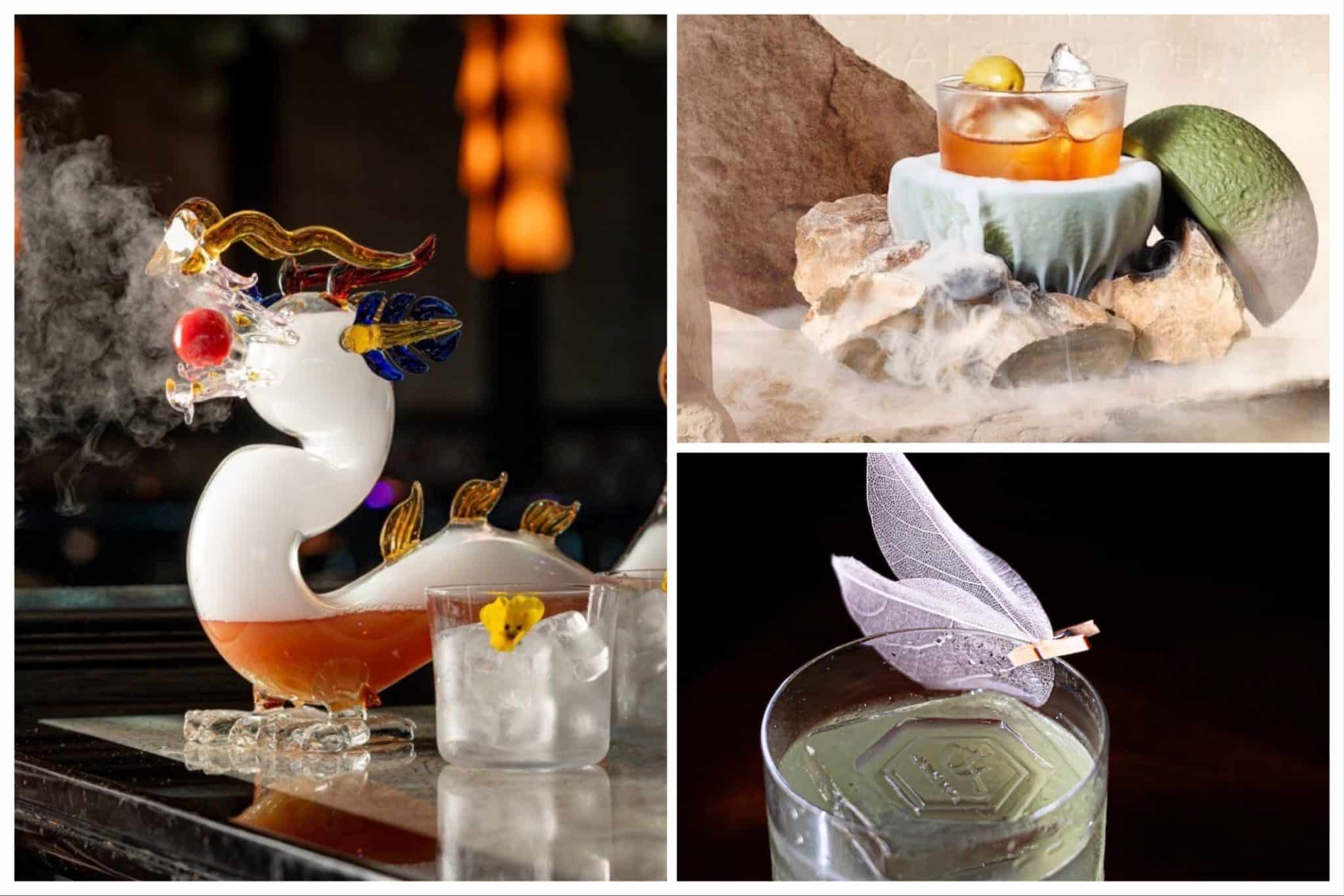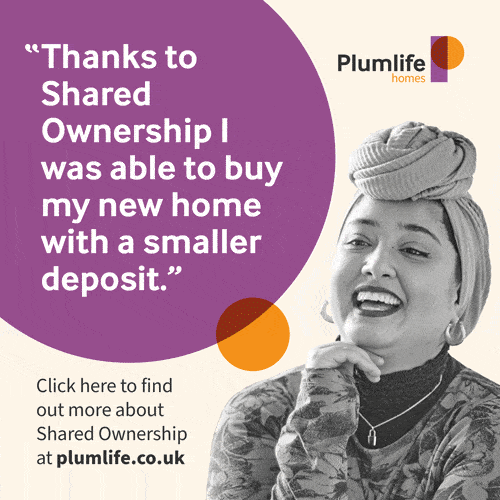From John Dalton to Oppenheimer: Manchester’s pivotal role in creating the atomic bomb
- Written by Ed Glinert
- Last updated 1 year ago
- Cornerstone, Featured, History

The atomic bomb is hot news right now, thanks to this summer’s big blockbuster film, Oppenheimer, named after J. Robert Oppenheimer, organiser of the Manhattan Project which dropped the bombs on Japan in 1945.
Ed Glinert of New Manchester Walks, who has hosted countless local tours that include stopping at the atomic bunker on Chinatown’s George Street, and giving talks on the story of the atomic bomb on cruise ships, relates the full atomic story to coincide with the release of the film and as the 78th anniversary of the dropping of the bombs in August 1945 to end the Second World War approaches.
John Dalton discovers the atom
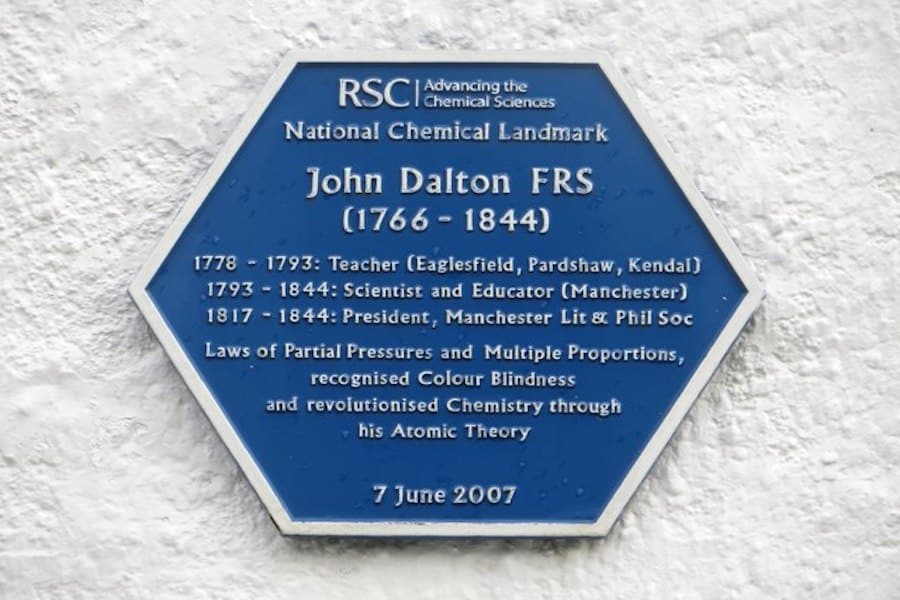
How did one man get to develop something so monstrous and evil as the atomic bomb?
Let’s go back to Manchester on the 21st of October 1803.
That evening, John Dalton read a paper to the Literary and Philosophical Society at their headquarters, 36 George Street, in what is now Chinatown, a building destroyed in the Second World War blitz by a conventional bomb, ironically.
In his talk, he explained that “An inquiry into the relative weights of the ultimate particles of bodies is a subject, as far as I know, entirely new; I have lately been prosecuting this inquiry with remarkable success”.
No one at that meeting would have realised that with his findings Dalton was inventing the modern world.
This was the proof of what several thinkers had already postulated, that matter was made up of atoms, the building blocks of everything – iron, copper, oxygen, lead…if you could continue breaking down those substances, you would eventually reach one atom.
Within Dalton’s atomic theory, like many scientific advances, there were errors. Dalton claimed there was nothing smaller than an atom.
When he was asked what was inside an atom, he couldn’t answer properly.
Nowadays everybody is familiar with the names of those unimaginably small particles – photons, protons, mesons, bosons – buzzing around inside the atom, not that we know too much about what’s inside them.
It took nearly a hundred years for anyone to successfully explain what was inside the atom, and again it happened in Manchester.
This time, it was thanks to New Zealander Ernest Rutherford who had joined the Manchester University physics department in 1907.
Rutherford began conducting experiments on radium, a strange newly-discovered metal that glowed in the dark. He ordered a huge stash of radium, around a hundredweight, from Vienna.
It was sent by ship which arrived at Manchester Docks, and was then transferred to a horse and cart that headed through Old Trafford and Hulme till it reached Manchester University in Chorlton-on-Medlock.
Unknown danger on the streets for those who came close by.
Rutherford and his team knew that something strange was taking place inside radium.
It emitted rays that they could trace. Rutherford called them “alpha” particles; we now know them to be parts of the gas helium. In 1911 his team conducted a breakthrough experiment in what is now the Physics Laboratory at Manchester University on the make-up of the atom.
They set up an intricate experiment with radium in which the alpha particles were directed at a target, a layer of very thin gold foil.
The team then measured the deflection of the alpha particles.
By that time, scientists knew Dalton was wrong; the atom wasn’t the smallest.
They believed the atom contained particles dotted about randomly, like plums in a pudding, so they expected nearly all the alpha particles to go straight through. Some of them bounced off the metal foil in all directions.
But incredibly, some came right back at the source, as if they had struck striking something much more massive than themselves.
Rutherford was astonished. “It was quite the most incredible event that has ever happened to me in my life. It was almost as incredible as if you fired a 15-inch
shell at a piece of tissue paper and it came back and hit you.”
He had made the startling discovery that while most of the atom is empty space, at the core is a small but solid nucleus. Nearly all its mass is located in this positively charged central nucleus, 10,000 times smaller than the atom itself.
One of Rutherford’s colleagues, Dane Niels Bohr, was the first to describe this as the “solar system” model of the atom: a nucleus like a sun at the centre, around which considerably smaller “planet” particles, which we now call electrons, orbit.
That’s the ingenuity of nature – that the smallest fundamental particle, the atom, is modelled on the biggest local structure, the solar system.
Ernest Rutherford Splits the Atom
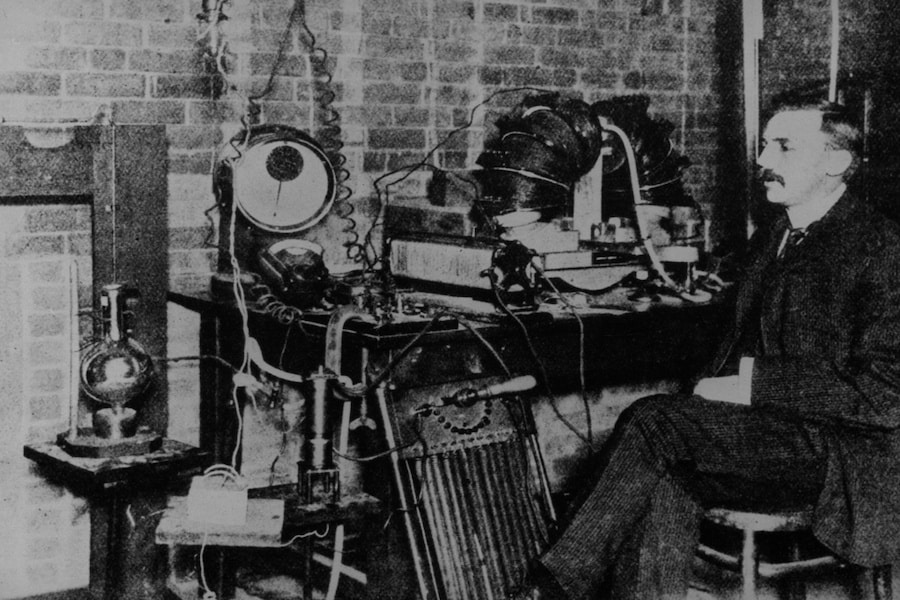
During the Great War, Rutherford and co were obliged to put their skills to military use.
Their task was to work on counteracting the Germans’ submarine menace in the North Sea.
But they couldn’t resist continuing to study the atom. In September 1917 Rutherford achieved one of the greatest advances in science – by accident.
He split the atom.
He had bombarded nitrogen atoms in a glass chamber with the alpha particles emitted by the radium.
The atoms changed from one element into another as the nitrogen atoms disintegrated into oxygen and various sub-atomic particles.
Ernest Rutherford had split the atom.
Amazingly, at the time, Rutherford had no idea what he had done.
Indeed he was so disbelieving he spent a year checking his findings.
But it was true.
He had split the atom, even if it wasn’t lead into gold, the alchemists’ age-old dream.
Rutherford eventually realised the significance and explained to a colleague: “I have been engaged in experiments which suggest that the atom can be artificially disintegrated. If it is true, it is of far greater importance than the war.”
Science’s greatest discovery?
This entire story is one of methodical scientific advances peppered with occasional bursts of dramatic genius.
The experiments continued and Rutherford moved to Cambridge.
There, in 1932 John Cockcroft and Ernest Walton built the world’s first nuclear particle accelerator.
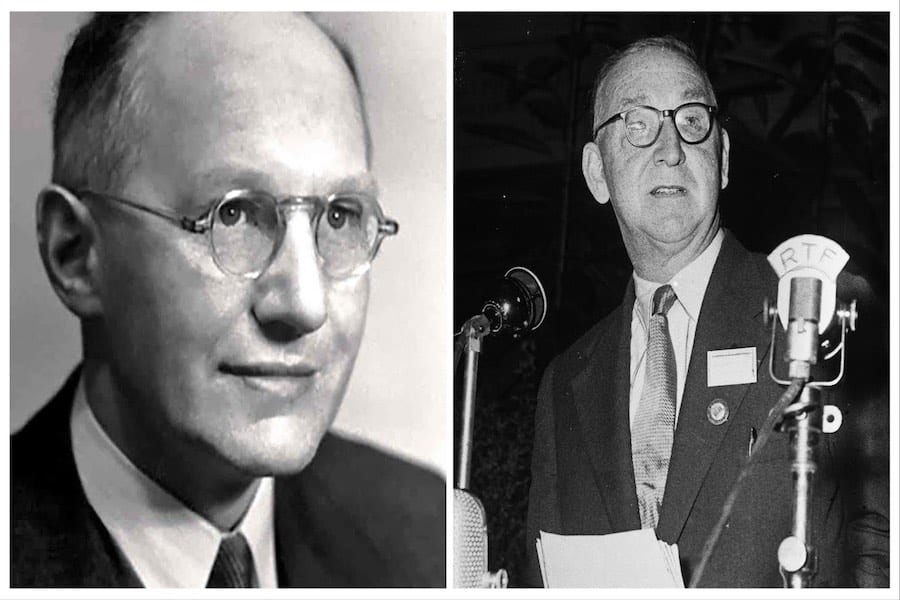
It took them two years.
A generator upped power to 600,000 volts in order to accelerate in a tube hydrogen atoms, the smallest atoms there are, would bombard a layer of lithium, the lightest of metals (in terms of sub-atomic particles).
The hydrogen bashed into the lithium, which then broke into two helium nuclei, shooting off in opposite directions with some force.
That’s so astonishing it’s worth looking at again.
A portion of one gas, hydrogen, is based on a metal, lithium, and the result is just gas, a different gas at that, helium, and loads of energy.
Where has the energy come from? It’s come from inside the atom. The remarkable news first reached the public in a tabloid, Reynolds News, on the 1st of May 1932 with the headline: “SCIENCE’S GREATEST DISCOVERY!”
What shocked Cockcroft and Walton was the energy released by this nuclear fission.
When a single proton of hydrogen hit the nucleus of a lithium atom at 200,000 volts, two alpha particles rushed out as if propelled by 8 million volts each.
Enormous inconceivable power could be unleashed from within the nucleus of the atom.
So Albert Einstein was right.
The amount of energy liberated is equal to the mass multiplied by an enormous number, the speed of light (which itself is an enormous number), multiplied by itself.
But how would this discovery be harnessed?
Would it bring unlimited cheap energy to mankind or be used for nefarious, military purposes?
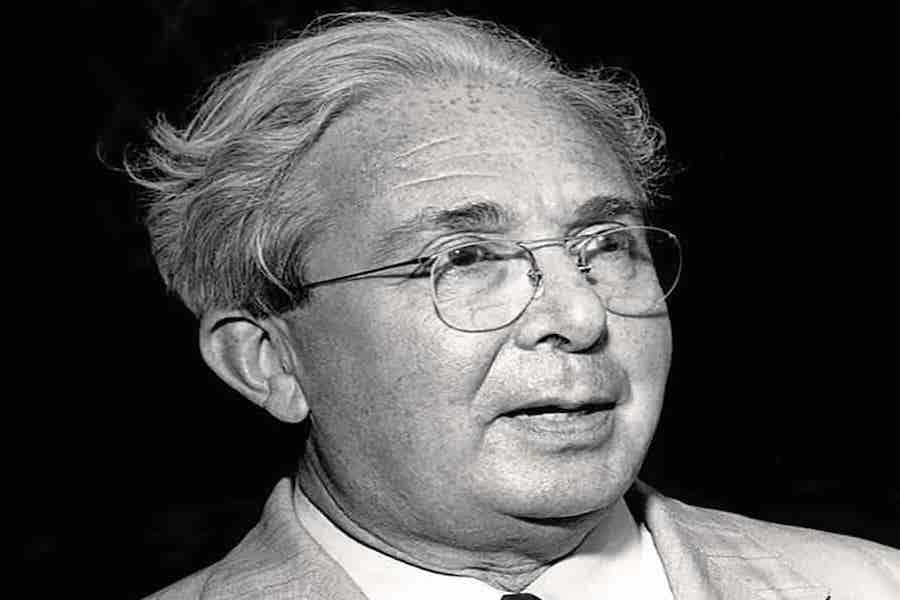
Leo Szilard, a friend of Einstein who had quit Nazi Germany and came to London, was responsible for the next advance.
It happened in London, at the junction of Southampton Row and Russell Square, near London University and the British Museum, on the 12th of September 1933.
It was there, as he waited for the lights to change and began to cross Southampton Row, that Szilard suddenly realised how an atomic chain reaction would
work: if you fired a neutron at a radioactive atom it would release two neutrons, each of which would hit another atom, which in turn would release two more neutrons.
The nuclear chain reaction would release unimaginable amounts of energy.
As another physicist, Lise Meitner put it, the splitting of a single uranium atom could liberate enough energy to make a grain of sand jump in the air.
In a split second, Szilard felt that the whole world had stopped.
He felt great fear.
A city like London and all its inhabitants could be destroyed in an instant.
As one of his biographers explained, “as he crossed the street time cracked open before him and he saw a way to the future, death into the world and all our woes, the shape of things to come…”
Albert Einstein is worried about the Atom Bomb
Experiments continued, and advances were made.
In December 1938, two German physicists, Otto Hahn and Fritz Strassman, fired neutron particles at uranium.
The uranium absorbed a neutron but became so unstable it split into two different elements: barium, a soft silvery metal, and krypton, a featureless gas now used in fluorescent lamps.
Hahn called this new, latest, nuclear discovery which split the neutron “nuclear fission”.
He won the Nobel Prize for Chemistry for this later, in 1944.
What was really remarkable was that the experiment released three more neutrons upon splitting.
Those three neutrons were then able to cause the fission of three more uranium nuclei, each of which released more neutrons, and so on.
The very chain reaction that Leo Szilard had envisaged crossing the road in London. There was another remarkable occurrence: the resulting product, after bombardment, weighed less than the original!
How could this be?
It was Lise Meitner, one of Hahn’s Jewish colleagues, who realised where it had gone.
It came to her while walking through a snowy Swedish forest during the 1938/39 New Year: the mass had turned into energy.
As the world came closer to war, the political situation regarding this science became more acute.
Experts from the two inevitable main opposing countries, Britain and Germany, knew what almighty powers had been unleashed, but were a good few years from using the knowledge to create a bomb. Nevertheless, Albert Einstein and Leo Szilard were worried.
On the 2nd of August 1939, they wrote to U.S. President Roosevelt with their concerns.
In the letter, they noted that “some recent work leads us to expect that the element uranium maybe turned into a new source of energy” and called for “watchfulness and quick action”. They feared that if the Nazis developed a uranium bomb they would use it.
What they didn’t know was that the Nazis were always behind in this race. For a long time Hitler and co would have nothing to do with what they called “Jewish science” pace Albert Einstein!
For ten weeks, there was no reply from Roosevelt. But at last, on 12 October 1939, the president told Einstein that the US government wished to look into the “uranium question”.
It took them so long it’s a wonder that the allies ever built the bomb. One question, which may never be answered satisfactorily, is whether Einstein and Szilard sent that letter to anyone else, in Britain perhaps.
While America was dithering, and not in the War at that stage, Britain was getting busy.
In charge of the country’s primitive secret atom bomb committee was Victor (Lord) Rothschild. He was a scientist, though not a nuclear physicist, but he understood the wider implications, and not only did he have the right contacts he was embedded in the country’s security services, with a whole host of different roles.
While the appeaser Neville Chamberlain was prime minister in 1939, Rothschild had an ally in Winston Churchill, then First Lord of the Admiralty.
Churchill had been impressed by his friend H. G. Wells who in his 1914 novel, The World Set Free, had coined the phrase “atomic bomb”. In the book Wells described
atomic energy as “a source of power so potent that a man might carry in his hand the energy to light a city for a year, fight a fleet of battleships, or drive one of our giant liners across the Atlantic”.
Churchill had grasped the danger of technology running ahead of morality in an article in the Pall Mall Gazette in 1924 in which he asked: “Shall we all commit suicide?
Might a bomb no bigger than an orange be found to possess a secret power to destroy a whole block of buildings, nay to concentrate the force of a thousand tons of cordite and blast a township at a stroke?”
In a speech seven years later entitled “Fifty Years Hence,” he asserted: “High authorities tell us that new sources of power, vastly more important than any we yet know, will surely be discovered.”
He feared that if the Nazis got the bomb first, it would be the end of civilisation.
Victor Rothschild also had support from two leading nuclear physicists, Otto Frisch and Rudolf Peierls, both Jewish, who had fled Germany and come to Britain.
Peierls spent some time at Manchester University, drawn by its historic role in the subject.
Research into the possibilities of atomic weapons took place underneath the Natural History Museum in Kensington, designed by Alfred Waterhouse, who was
responsible for Manchester Town Hall.
The site was deliberately chosen on the ground that the Nazis wouldn’t bomb the area; that that part of Kensington would be a valuable asset under a British fascist regime.
Otto Hahn and Weiner Heisenberg
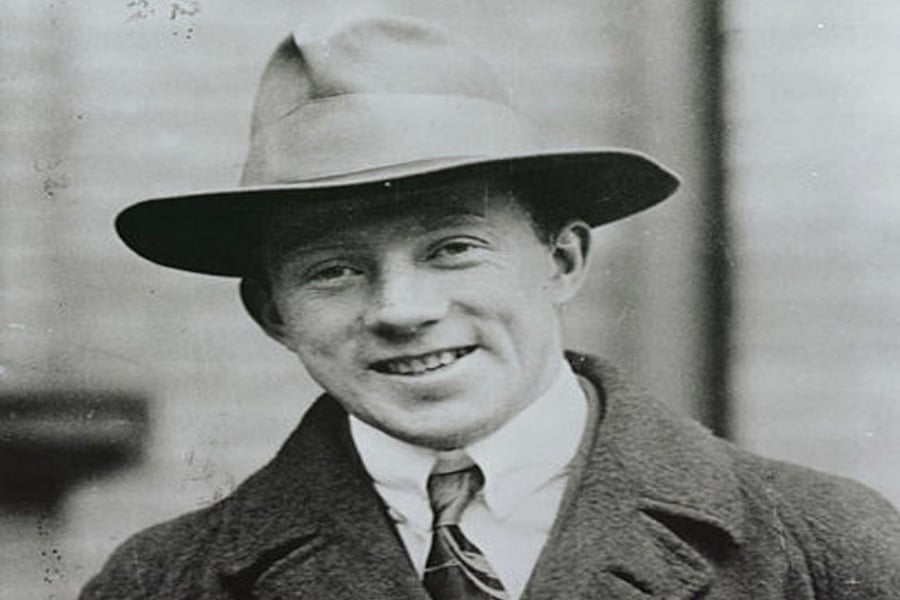
Meanwhile, over in Germany, the leading nuclear physicists, Otto Hahn and Weiner Heisenberg, were playing a dangerous long game.
Their mission throughout the War was to sabotage the Nazi atomic bomb programme by doing as little as possible on it while working on nuclear energy programmes that would not help the Nazis build the bomb.
Fortunately for our side, not only were the Nazis way behind in devising an atom bomb, having derided the nuclear physics of the day as “Jewish science”, but in the early days of the war they expected so swift a victory they believed they wouldn’t need nuclear weapons.
They thought it made little sense to commit resources which could be put to more use elsewhere. By the time Nazi High Command realised the war was going to last some time they were too far behind in the atom bomb race, didn’t know their leading nuclear physicists were stalling, and it was too late to obtain the resources.
The allies build the bomb – the Manhattan Project The key element was resources.
To build the bomb the military needed a certain kind of uranium and the best place to find it was the Shinkolobwe mine in a remote location in the Congo.
There the conditions were as horrific as Joseph Conrad had outlined decades earlier in Heart of Darkness; the workers carried sacks of the most dangerous atomic ore more than a dozen miles to the railway.
At the start of the War, only one or two of the people mentioned in Britain knew of the mine’s vital role and fortunately, no one in Germany did.
The mine owner, Edgar Sengier, was particular clever.
He had sent the Americans the right uranium before the War, just for safe-keeping, before the Americans even knew they needed it…. He arranged a deal with the Archer Daniels Midland company, a linseed-crushing business in Staten Island, to store it, secure it, safe-keep it.
Let no one touch it until Sengier or his people gave the say-so. In 1938 a ship carrying raw high-grade uranium ore from the Belgian Congo steamed into New York Harbour, negotiated the Kill van Kull tidal strait, and docked near the Bayonne Bridge. Even the owners of Archer Daniels Midland had no idea what this ore was, but had been paid well to store it.
No Nazi supporters across the pond or, thank God, the US ambassador to Britain, Joe Kennedy, the appeaser, knew.
Pearl Harbour
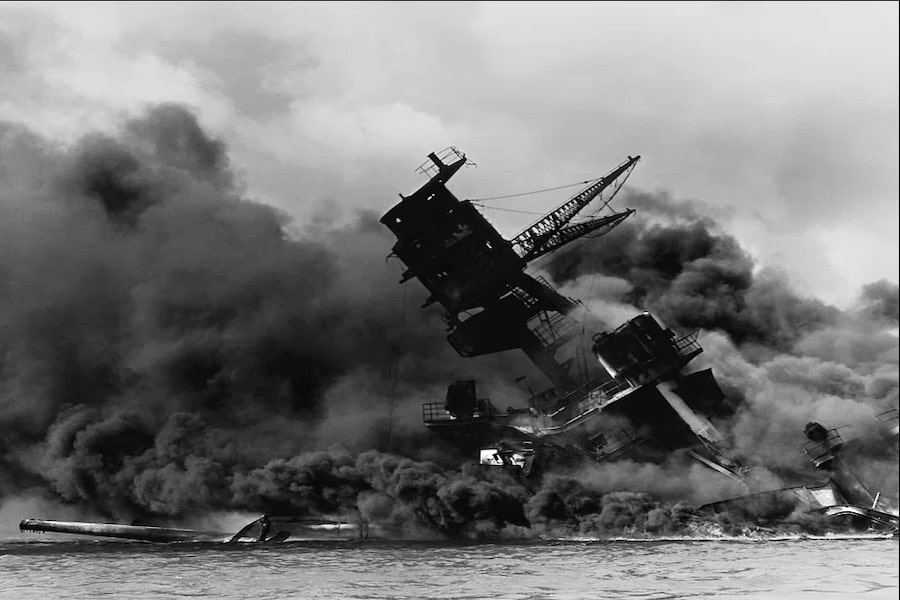
Pearl Harbour, Sunday 7 December 1941, brought America into the War.
The Americans’ first serious atomic programme meeting took place a few weeks later, on the 18th of December.
the Americans now involved, it was soon decided that the atom bomb project would have to move there.
If a bomb was built it had to be tested, and Britain was too small and crowded – and too near Nazi eyes.
The Manhattan Project
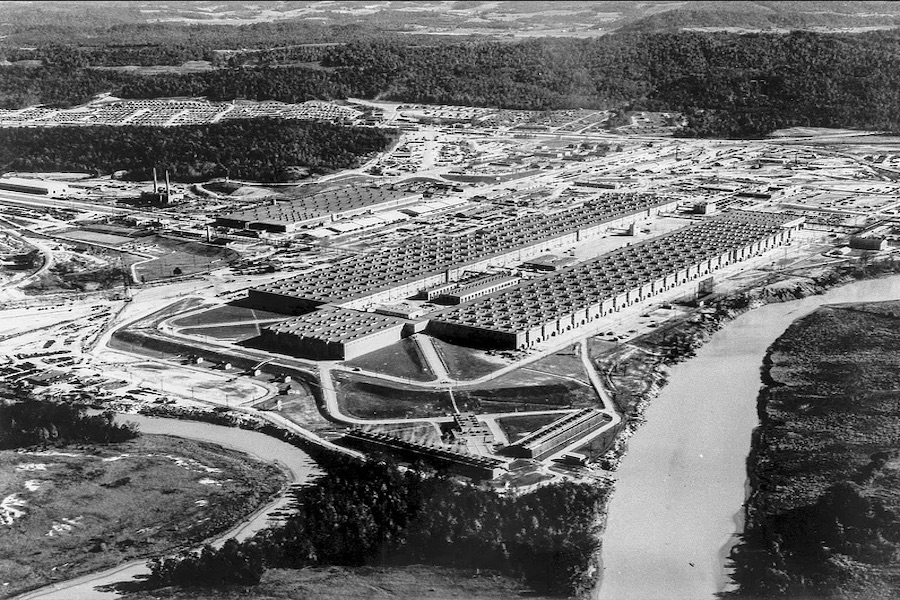
The Manhattan Project was launched in June ’42 to build atomic bombs.
It was based in a variety of obscure US locations, including Oak Ridge, Tennessee.
When the project leaders started actively searching for the appropriate uranium in 1942, Colonel Kenneth Nichols paid for Edgar Sengier to come to New York.
He discovered to his amazement that Sengier had already placed 1,200 tons of top-grade uranium on American soil.
Meanwhile, seriously intense security measures were deployed at the Shinkolobwe mine.
The place was removed from the maps. No journalist, no outsider, was allowed anywhere near.
The Congo government, run by the Belgians in exile, authorised the shooting on sight of any persons found within the boundaries of the mine who had no right to be there.
Sengier later explained that if he got wind from contacts at the coast that Germans were heading his way he would immediately close the mine and disappear.
He later became the first non-American civilian to be awarded the Medal for Merit by the US government.
Enrico Fermi
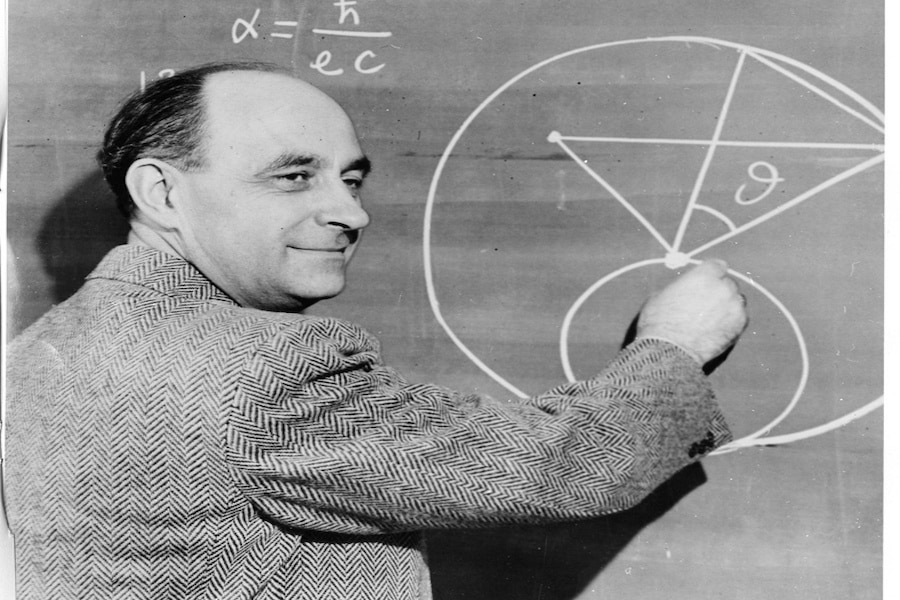
Meanwhile the science had developed. The first ever chain reaction took place in Chicago on Wednesday the 2 nd December 1942. Enrico Fermi, an Italian émigré who had fled fascism, was in charge.
Fermi had left Italy to escape new racial laws that implicated his Jewish wife, Laura Capon. His nuclear experiment took place in a squash court under Chicago’s Stagg Field. After 4 minutes 30 seconds, Fermi inserted the control rods. Had he not done so, the whole of Chicago would have gone up in a big mushroom cloud.
The Tribune Tower, the Wrigley Building, the Auditorium Theatre – the lot.
Things moved ahead with the Manhattan Project to build the big bomb.
Jornado del Muerto
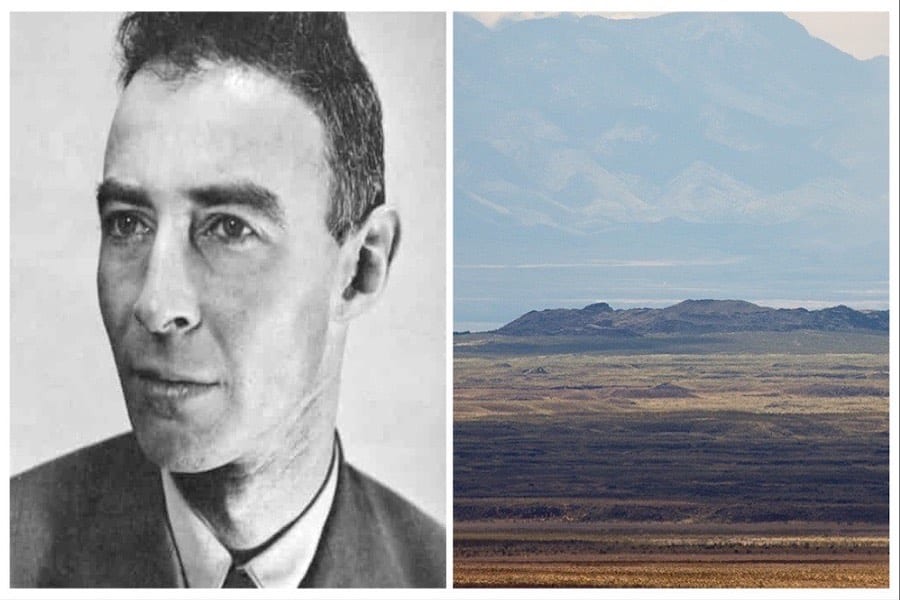
The first atomic test took place at dawn on the 16 th of July 1945 at Jornado del Muerto (the Journey of Death), a remote desert site in New Mexico.
Some of those involved laid bets on whether the blast would incinerate the entire planet or be a dud. If it had incinerated the planet, how would they have accrued their winnings? At 5.29 a.m. a huge fireball, followed by a heat wave, flashed across the desert.
Graham Farmelo described it in his book Churchill’s Bomb: “Suddenly, noiselessly, an intensely bright pinpoint of light appeared and grew quickly into a huge ball of swirling debris, bathing the surrounding hills and desert in a dazzlingly bright light, as if someone had flicked a switch and turned on the sun.”
The explosion left a crater 1,200 ft wide, six feet deep.
Some of the desert sand turned to glass and ash rained on the surrounding landscape for days.
The Army issued a fake cover story that the blast was the result of an accidental explosion on a base.
Kenneth Bainbridge, who was in charge of preparing the test site, put it succinctly: “Now we’re all sons-of-bitches.”
“Now I am become Death, the destroyer of worlds.”
Robert Oppenheimer who was in overall charge of the operation cited a translated piece of Hindu scripture: “Now I am become Death, the destroyer of worlds.”
With the preparations complete, it was now time to use the bomb.
Who should be killed? What followed was the most cynical military choice of all time. The bomb could not be dropped on the epicentre of the enemy’s territory, Berlin.
Such a measure would rule out post-war reconciliation and resolution. Land it on a different enemy, a long long way away from Europe – Japan.
The first atom bomb detonation
The first atom bomb was detonated at 8.15 a.m. on the morning of 6 August 1945 when the Enola Gay plane dropped the device on Hiroshima by parachute.
The A-bomb’s explosive power came from the smashing of uranium-235 atoms – nuclear fission – by means of a charge of nitrocellulose propellant powder.
The bomb contained just 64 kg (141 lb) of enriched uranium and exploded nearly 2,000 ft above the ground. As many as 70,000 people were killed instantly.
The heat was so intense that some people simply vanished. The final death toll was calculated at 135,000.
Ironically the victims included some American prisoners-of-war who were incarcerated in Hiroshima.
The city was chosen mostly because it had not been bombed conventionally, therefore the effects of the bombing could be analysed on virgin ground. Hiroshima was also an important military base.
Within hours of the attack, U.S. newspapers were filled with headlines about the devastation.
“Harnessing the Basic Power of the Universe”
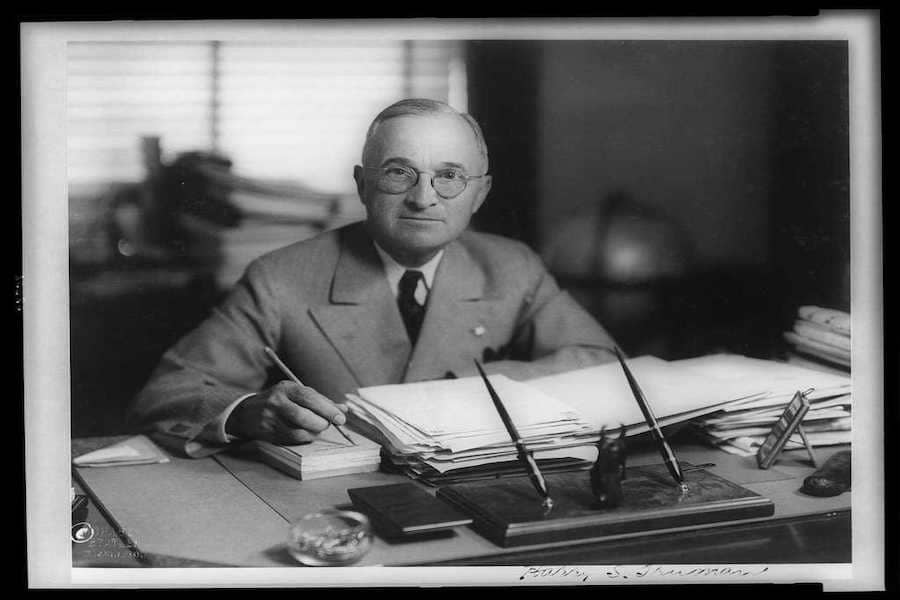
President Truman described the astonishing magnitude of the explosion – 2,000 times bigger than anything that had gone before – explaining that. this was possible because the bomb in question “is an atomic bomb.
It is a harnessing of the basic power of the universe. The force from which the sun draws its power has been loosed against those who brought war to the Far East”.
Three days later the Bockscar and its crew dropped the “Fat Man” atomic bomb on Nagasaki, a major shipbuilding city which had already been conventionally bombed a number of times. It should have been blasted on Kokura but bad weather saved that city.
It was covered by cloud, which meant the pilot, Charles Sweeney, couldn’t get a good view.
With fuel levels dropping he chose Nagasaki. It too was covered with cloud so he used radar. At the last minute Sweeney spotted a break in the cloud and chose his target, his pivot, a race track, and dropped “Fat Man”.
The inhabitants ignored the air-raid sirens, thinking it was another false alarm. One second normal life; the next firestorms in people’s homes, factories, schools, open roads and on the ground. Victims were instantaneously squeezed by the pressure
against walls, which caused bone fractures and ruptures, flash-burning their skin, peeling it off.
The blast wind tore the heads off babies that were being carried on their mothers’ backs in the traditional Japanese fashion.
The lucky ones nearer the epicentre were at least instantly turned to ash. Within the first two to four months the bombings had killed perhaps about 135,000 in Hiroshima and around 80,000 in Nagasaki, the lower number due to the city’s being shielded by mountains. Roughly
half of the deaths in each city occurred on the first day.
There were further deaths and the development of cancers as time went on. The scientific reaction was summed up by Niels Bohr, who had been one of Rutherford’s team at Manchester University.
He had originally thought that no one would ever use the bomb because of the repercussions. When he discovered he was wrong he thought that the knowledge of nuclear technology should be shared amongst
the world’s scientists.
That way no one would ever use the bomb again.
Churchill was horrified: “Bohr ought to be confined, or at any rate made to see that he is at the very edge of mortal crimes,” the now ex-prime minster thundered.
The spy Britain soon got its own big bomb. The new Labour government of 1945 insisted on it.
As foreign secretary Ernest Bevin put it: “We’ve got to have this thing over here, whatever it costs, we’ve got to have the bloody Union Jack on top of it.”
Meetings about the bomb were held in the utmost secrecy at 80 Strand, London, a grand office block that had once been the biggest hotel in Europe.
That way the Whitehall machinery would have no inkling. When Winston Churchill became Prime Minister again in 1951 he was amazed at how Attlee had managed to bury the atomic production costs within the budget…while the people endured rationing.
Niels Bohr’s hope that the knowledge of how to build such bombs be shared amongst the world’s scientists came true.
Soon the Soviets were making their own bomb. It was all down to London-based Klaus Fuchs, a German-born communist who had been working on the allies’ bomb from the beginning. He also believed all the world’s scientists should have the same knowledge about the bomb.
That way, as Bohr had stated, no one would ever use it again.
Fuchs had been granted British citizenship in August 1942 and had been sent to America to work on the Manhattan Project.
There he fed the Soviets information. After the War, back in Britain, he continued to inform the Soviets.
He met his handler outside Putney Bridge station and they would go for a pint in the Spotted Horse on the High Street.
Fuchs was arrested on Friday the 3 rd of February 1950, ironically at 80 Strand where Clement Attlee had held the secret atom bomb sub-committee meetings. When he arrived at Charing Cross police station Fuchs told his handlers dejectedly: “I will be hanged”.
He was amazed when they explained that he wouldn’t because they knew he hadn’t made any money from his actions.
He had passed on the secrets on moral and political, not financial grounds. He was sentenced to 14 years and served nine. When released Fuchs immediately fled, or was probably deported, to the communist
paradise of East Germany. The Daily Mirror headline read: “Klaus Fuchs – Off.”
By the end of the 1970s, the secrecy that had enveloped the Manhattan Project had mostly dissipated through the passage of time. In Manchester the authorities were shocked when they realised the city’s key role in the whole story.
Unable to make any significant contribution to the controversy around the nuclear arms race, Manchester city simply did what little they could and made a political statement.
And so in November 1980, Manchester became the world’s first Nuclear Free Zone.
This was at the height of campaigns across the West for nuclear disarmament, an issue which tortured Labour at the following general election.
The city mostly responsible for the advent of atomic and nuclear technology now wanted nothing more to do with it.
- This article was last updated 1 year ago.
- It was first published on 24 July 2023 and is subject to be updated from time to time. Please refresh or return to see the latest version.
Did we miss something? Let us know: [email protected]
Want to be the first to receive all the latest news stories, what’s on and events from the heart of Manchester? Sign up here.
Manchester is a successful city, but many people suffer. I Love Manchester helps raise awareness and funds to help improve the lives and prospects of people across Greater Manchester – and we can’t do it without your help. So please support us with what you can so we can continue to spread the love. Thank you in advance!
An email you’ll love. Subscribe to our newsletter to get the latest news stories delivered direct to your inbox.
Got a story worth sharing?
What’s the story? We are all ears when it comes to positive news and inspiring stories. You can send story ideas to [email protected]
While we can’t guarantee to publish everything, we will always consider any enquiry or idea that promotes:
- Independent new openings
- Human interest
- Not-for-profit organisations
- Community Interest Companies (CiCs) and projects
- Charities and charitable initiatives
- Affordability and offers saving people over 20%
For anything else, don’t hesitate to get in touch with us about advertorials (from £350+VAT) and advertising opportunities: [email protected]

Fast, fierce and unmissable: Manchester Thunder are bringing Netball like you’ve never seen it before!


Review: Girl on the Train at LOWRY is a’ tour de force in psychological drama’

Where the Michelin Guide recommends to eat in Manchester







